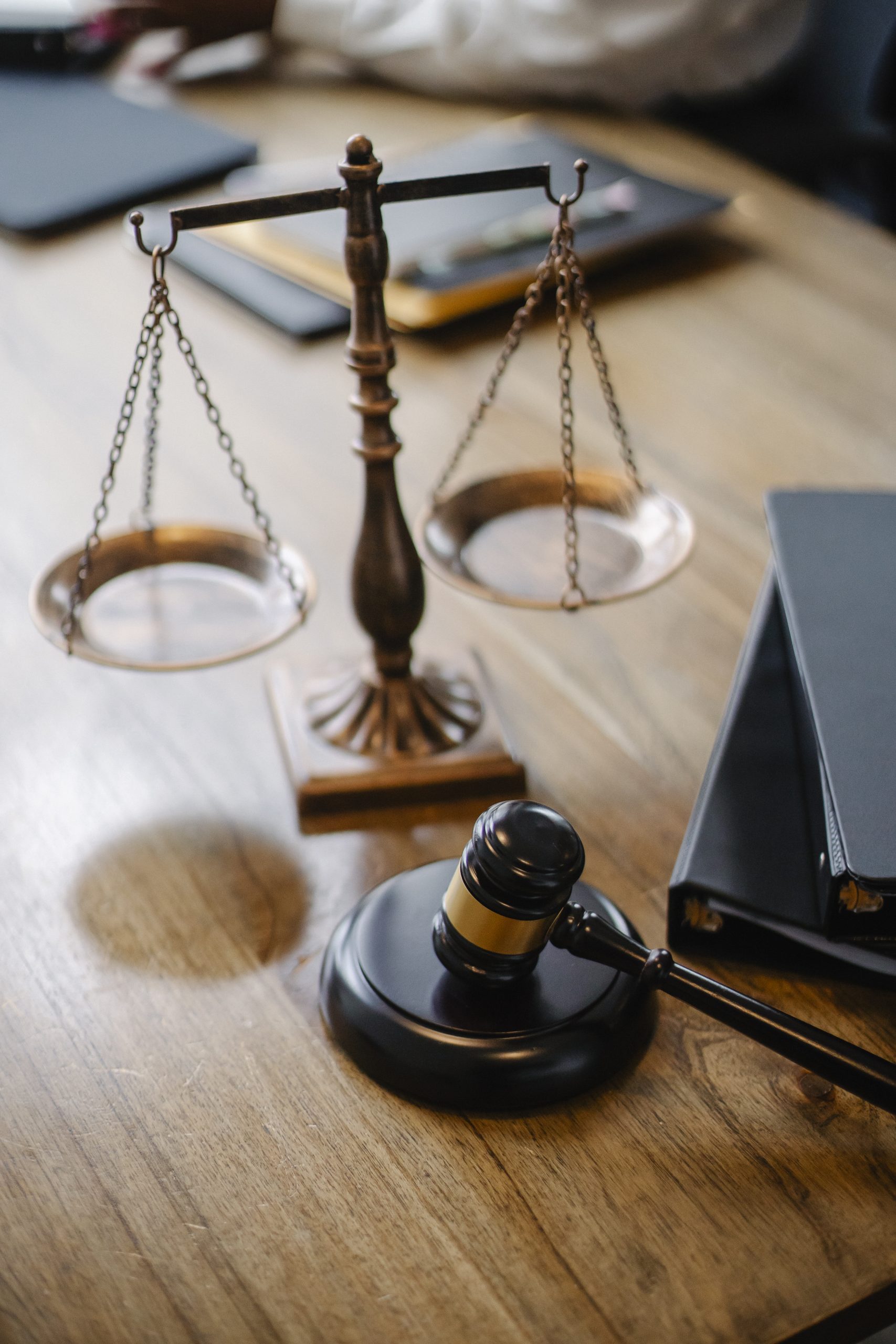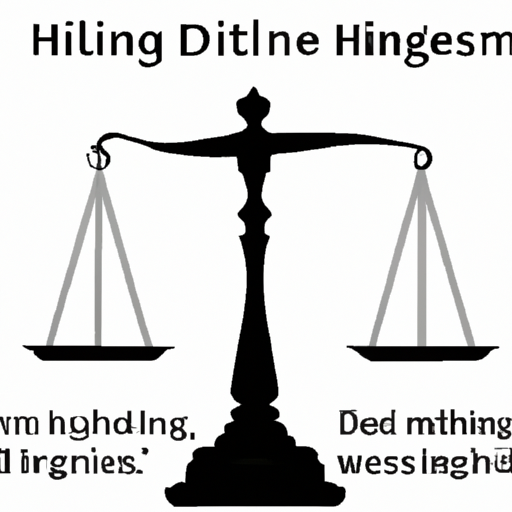In today’s ever-changing business landscape, it is essential for companies and business owners to stay informed about the legal frameworks that govern their employment relationships. This is where Employment At-will Laws come into play. Understanding this area of law is crucial as it lays the foundation for the employer-employee relationship, guiding businesses on the rights and obligations they have towards their employees. This article provides a comprehensive overview of Employment At-will Laws, shedding light on their key aspects and implications. By the end, you’ll have a clearer understanding of this legal concept and be better equipped to navigate the complex world of employment law. Find below some frequently asked questions and their concise answers for your convenience.

Understanding Employment At-Will
Definition of Employment At-Will
Employment at-will refers to the legal doctrine that allows employers to terminate an employee’s relationship without providing a specific reason, as long as the termination is not based on unlawful factors such as discrimination or retaliation. In an employment at-will arrangement, both parties, the employee and the employer, have the freedom to terminate the employment relationship at any time, for any reason, or for no reason at all, without incurring legal liability. This principle is applicable in the majority of states within the United States, unless a specific employment contract or other legal exceptions apply.
Common Law Principle
Employment at-will is a principle derived from common law, which is the legal precedent established by court decisions rather than statutory laws. Under the common law, the employer has the right to terminate an employee without cause, and similarly, an employee has the right to quit their employment without providing a reason. This principle was initially based on the idea of preserving individual freedom and maintaining an equitable balance between the employer and employee. It allows employers to have greater flexibility in managing their workforce and making business decisions, while employees have the freedom to seek other employment opportunities.
Exceptions to Employment At-Will
While employment at-will is the general rule, there are certain exceptions that provide legal protections to employees. These exceptions vary depending on the jurisdiction and the specific circumstances, but some common exceptions include:
-
Implied Employment Contracts: In some cases, employment at-will may be altered by an implied contract between the employer and the employee. This can occur when oral or written statements, company policies, or past practices create a reasonable expectation of continued employment. If an implied contract exists, termination without cause may be considered a breach of contract, and the employee may have legal recourse.
-
Violation of Public Policy: Termination that violates public policy is another exception to the employment at-will doctrine. If an employer fires an employee for refusing to engage in illegal activities, or for exercising a legally protected right, such as reporting workplace safety violations, the termination may be considered wrongful.
-
Discrimination and Retaliation Claims: The employment at-will doctrine does not protect employers from wrongful termination claims based on unlawful discrimination or retaliation. If an employee can demonstrate that their termination was motivated by factors such as race, gender, religion, disability, or in retaliation for engaging in protected activities, the employer may be held liable.
Benefits of Employment At-Will
Flexibility for Employers
One of the primary benefits of the employment at-will doctrine is the flexibility it provides for employers. In today’s ever-changing business environment, companies need to be able to adapt quickly to market conditions and make necessary adjustments to their workforce. Employment at-will allows employers to restructure their operations, downsize, or make strategic decisions without being tied down by lengthy termination procedures or contractual obligations. This flexibility can be crucial for businesses to remain competitive and agile.
Efficiency in Hiring Practices
Employment at-will also promotes efficiency in hiring practices. By having the ability to terminate employees without cause, employers have more freedom to conduct performance evaluations and assess whether an employee is the right fit for the organization. This allows companies to make informed decisions about their workforce, ensuring they have the most qualified and productive employees. Without employment at-will, employers may face greater challenges in maintaining an efficient hiring process and may be hesitant to take appropriate action when necessary.
Protection against Unproductive Employees
Another benefit of employment at-will is the protection it offers to employers against unproductive or underperforming employees. In some cases, an employee may not meet the expectations or requirements of their role, causing a negative impact on the company’s productivity or overall performance. Employment at-will allows employers to address these issues swiftly through termination, ensuring that the organization can maintain a high level of productivity and efficiency. This is particularly important for small businesses and startups that cannot afford to keep unproductive employees onboard.
Challenges for Employers
Wrongful Termination Claims
One of the significant challenges employers may face under employment at-will is the risk of wrongful termination claims. If an employee believes they were terminated for unlawful reasons, they may file a lawsuit against the employer. Wrongful termination claims can arise from alleged discrimination, retaliation, violation of public policy, or breach of an implied employment contract. Successfully defending against these claims can be costly in terms of legal fees and potential damage to the employer’s reputation.
Discrimination and Retaliation Claims
Employment at-will does not protect employers from claims of discrimination and retaliation. If an employee believes they were terminated based on their protected characteristics, such as race, gender, age, religion, or disability, they can file a discrimination claim against the employer. Similarly, if an employee is terminated in retaliation for exercising their legal rights, such as reporting discrimination or unsafe working conditions, they may file a retaliation claim. These claims can result in significant legal consequences and damage the employer’s reputation.
Violations of Public Policy
Terminating an employee in violation of public policy is another challenge for employers. If an employer fires an employee for refusing to engage in illegal activities or in retaliation for reporting unlawful conduct, the employee may claim wrongful termination. These claims can be complex and require employers to navigate the complexities of labor laws and regulations to ensure compliance. Violating public policy can result in legal penalties, including fines and possible criminal charges, in addition to civil liability.
Legal Protections for Employees
Civil Rights and Anti-Discrimination Laws
Employees are protected by civil rights and anti-discrimination laws, which prohibit discrimination based on protected characteristics such as race, color, national origin, sex, religion, disability, or age. These laws ensure that employees are treated fairly and not discriminated against in any aspect of employment, including termination. If an employee believes they have been terminated due to discrimination, they can file a complaint with the appropriate government agency, such as the Equal Employment Opportunity Commission (EEOC), and potentially pursue legal action against the employer.
Labor Laws and Union Activity
Labor laws provide protections for employees who engage in union activities or collective bargaining. Employers are prohibited from terminating an employee for participating in these activities or for attempting to organize a union. These laws aim to protect employees’ rights to collective bargaining and ensure that they are not subjected to adverse employment actions as a result of exercising their rights. Employers that violate these laws may face legal consequences and the potential for reinstatement of the terminated employee.
Whistleblower Protections
Employees who report illegal activities or unethical conduct within their organization are protected under whistleblower laws. These laws provide protection against retaliation, including termination, for employees who disclose wrongdoing to the appropriate authorities. If an employee believes they were terminated in retaliation for reporting illegal conduct or participating in a whistleblower investigation, they can seek legal recourse and potentially recover damages. Whistleblower protections encourage employees to report unlawful activities without fear of reprisal.

Employment Contracts and At-Will Employment
Written Employment Contracts
While employment at-will is the default arrangement in the absence of a written employment contract, employers have the option to establish contractual agreements with their employees. Written employment contracts can modify the at-will nature of employment, providing specific terms and conditions regarding termination. These contracts may specify reasons for termination, notice periods, severance packages, and other provisions that limit the employer’s ability to terminate without cause. Employers should consult with legal counsel when drafting employment contracts to ensure compliance with applicable laws and avoid unintended consequences.
Implied Employment Contracts
In some cases, an implied employment contract may alter the at-will relationship between an employer and employee. Implied contracts can be created through oral or written statements, company policies, job offer letters, employee handbooks, or past practices. These implied contracts may create reasonable expectations of continued employment, and terminating an employee without cause in violation of these expectations can result in a breach of contract claim. Employers should ensure that their policies and practices are consistent with their intended at-will employment status to minimize the risk of implied contracts being formed unintentionally.
Termination Policies and Procedures
Creating Clear Policies
To minimize the risk of wrongful termination claims and ensure consistency in decision-making, employers should develop clear termination policies and procedures. These policies should outline the circumstances under which termination may occur, the process to be followed, and any required notice periods. Clear policies help ensure that employees understand the expectations and consequences of their actions, reducing the potential for misunderstandings or claims of unfair treatment.
Consistent Enforcement
Consistency in enforcing termination policies is crucial to avoid claims of discrimination or favoritism. Employers should apply their policies consistently to all employees, regardless of their position or protected characteristics. Inconsistencies in enforcement can create the perception of unfair treatment and increase the likelihood of legal challenges. Consistent enforcement demonstrates that termination decisions are based on legitimate business reasons and not discriminatory or retaliatory motives.
Documentation and Communication
Employers should maintain thorough documentation of all aspects related to termination decisions, including performance evaluations, disciplinary actions, warnings, and the reasons for termination. Accurate and comprehensive documentation helps employers demonstrate that termination decisions were based on legitimate business reasons and not unlawful motivations. Additionally, clear and effective communication with the employee regarding the reasons for termination can minimize misunderstandings and reduce the potential for legal disputes.
Benefits of Seeking Legal Advice
Understanding Rights and Obligations
Seeking legal advice can help employers understand their rights and obligations under employment at-will laws, as well as other related regulations. Employment attorneys can provide guidance on developing effective termination policies, complying with anti-discrimination laws, and navigating complex areas such as public policy exceptions or implied contract claims. By understanding their legal obligations, employers can minimize the risk of legal disputes and ensure compliance with applicable laws.
Negotiating Employment Contracts
Employment attorneys can assist employers in negotiating employment contracts that meet their specific needs while maintaining compliance with employment laws. They can help draft contract provisions that clearly define terms of employment, including termination conditions, notice periods, and severance packages. By engaging legal counsel during the negotiation process, employers can protect their interests and align employment arrangements with their business objectives.
Guidance during Employee Termination
Employment terminations can be sensitive and carry legal implications, making it crucial for employers to seek guidance during the process. Attorneys specialized in employment law can provide advice on best practices, ensure compliance with legal requirements, and help employers handle terminations in a professional and compassionate manner. By navigating terminations effectively, employers can minimize the risk of potential legal claims and maintain positive relationships with their remaining employees.
Common Misconceptions about Employment At-Will
Absolute Freedom to Terminate
One common misconception about employment at-will is the belief that employers have absolute freedom to terminate employees without consequences. While employment at-will provides flexibility for employers, there are legal limitations on termination. Employers cannot terminate employees based on unlawful factors such as discrimination or retaliation, and termination in violation of public policy can result in legal liability. It is essential for employers to understand the boundaries of employment at-will and ensure compliance with applicable laws.
No Legal Recourse for Employees
Another misconception is that employees have no legal recourse if they are terminated under employment at-will. While employees may have limited options for challenging a termination, they can pursue legal action if they believe they were terminated unlawfully. Discrimination, retaliation, violation of public policy, or breach of an implied employment contract are potential grounds for employees to seek legal recourse. Employees who believe they were wrongfully terminated should consult with an employment attorney to understand their rights and explore potential legal options.
No Obligations for Employers
Contrary to another misconception, employers do have obligations when it comes to termination, even under employment at-will. Employers must comply with applicable anti-discrimination laws, labor regulations, and other legal requirements. They must also ensure that termination decisions are not driven by discriminatory or retaliatory motives. Employers have the responsibility to create and enforce fair and unbiased termination policies and procedures. Understanding and fulfilling these obligations is crucial for employers to maintain a positive work environment and avoid legal disputes.

Frequently Asked Questions
What does employment at-will mean?
Employment at-will means that either the employer or the employee can terminate the employment relationship at any time, for any reason, or for no reason at all, without incurring legal liability (except for unlawful factors such as discrimination or retaliation). It is the default arrangement in the majority of states within the United States unless a specific employment contract or other legal exceptions apply.
Can an employer terminate an employee without reason?
Yes, under the employment at-will doctrine, an employer can terminate an employee without providing a specific reason. However, it is crucial for employers to ensure they are not terminating employees based on unlawful factors, such as discrimination or retaliation, as this can lead to legal consequences.
What should I do if I believe I was wrongfully terminated?
If you believe you were wrongfully terminated, it is essential to consult with an employment attorney to understand your rights and potential legal remedies. They can assess the details of your situation and advise you on the best course of action, which may include filing a complaint with the appropriate government agency or pursuing legal action against your former employer.
Can an employer modify the at-will nature of employment?
Yes, an employer can modify the at-will nature of employment through a written employment contract. By entering into a contract with an employee, employers can establish specific terms and conditions regarding termination, which may limit their ability to terminate without cause. It is advisable to consult with an employment attorney when drafting and negotiating employment contracts to ensure compliance with applicable laws.
What legal protections do employees have in an at-will employment relationship?
While at-will employees do not have the same level of job security as those protected by employment contracts, they still have legal protections. Employees are protected by laws that prohibit discrimination based on protected characteristics, such as race, gender, religion, disability, or age. They also have protections against retaliation for engaging in legally protected activities, such as reporting discrimination or participating in whistleblower investigations. Additionally, certain exceptions to employment at-will, such as implied contracts or violations of public policy, provide additional legal protections for employees.






































